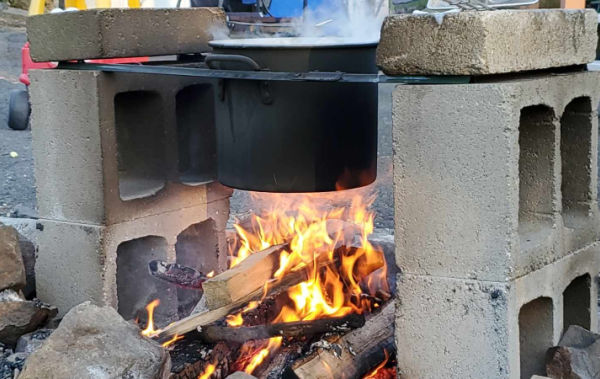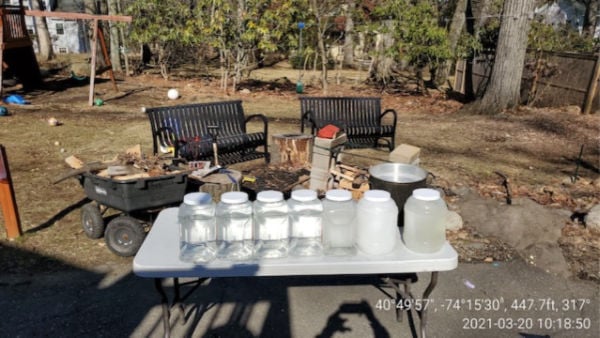
When life gives you lemons, you’re supposed to make lemonade. Many of us have been doing just that during the COVID-19 pandemic. But Sean DiBartolo had maple trees, which don’t lend themselves to lemonade. So he chose to make maple syrup. Yup, right in his Verona backyard, with his Verona neighbors looking on in amazement.
Vermont is, by far, the largest maple syrup producer in the United States, accounting for almost half of the 4.3 million gallons produced here. New Jersey’s output is so small it doesn’t crack the top seven states. But boosting the state in the ranking tables wasn’t on DiBartolo’s mind when he began eyeing the maple trees in his backyard last fall.
All trees have sap running through them. Sugar maples are preferred for maple syrup production because they produce a lot of sap and it is high in sugar, but people do make syrup from other maples, as well as from birch and nut trees (we have those in Verona too). Draining some of the sap out of a tree doesn’t hurt it, but it can only be done in a very small number of weeks in late winter before branches start to develop their spring buds.
DiBartolo, a geotechnical engineer who serves on the Verona Environmental Commission, identified two of his backyard trees as maples before the leaves fell last fall. He had a bit of knowledge about tapping, having put a spigot in a tree for a science project when he was a fifth grader, but had never done the full syrup experience.
In late January he put in three taps, hung buckets on them, and waited for the sap to flow in. As the buckets filled, DiBartolo filtered out any debris that collected, poured the sap into plastic containers that had once held pretzels (“We had been saving them for something”) and then stored the containers in a second refrigerator in the basement. “Sap can spoil, just like milk,” he notes.

Eventually, DiBartolo had enough sap that he could begin boiling most of it away. Tree sap has a lot of water in it, which needs to be evaporated to get to the essence of the syrup: It takes 40 gallons of sap to make one gallon of syrup. There are any number of gadgets for the task (as there are for so many things in life), but DiBartolo rigged a boiling station out of what he had on hand, like cinder blocks to contain a wood fire and metal bars to suspend a big pot over it. He had plenty of wood on hand from an oak tree that fell in his yard during a 2019 storm. “One of my pandemic activities was log-splitting,” he says.
Boiling is a slow all-day affair, which meant that it was not of much interest to DiBartolo’s children, who are in Kindergarten and second grade, except for the opportunity to make S’mores in the fire. When the sap begins to go amber, it must be brought inside for a controlled boil at just about 212 degrees. DiBartolo MacGyvered that step too. “I used a meat thermometer,” he says, “but a candy thermometer would have been better.”
The DiBartolos and some friends have tasted a bit of their syrup but the family has yet to enjoy it over pancakes or waffles. Sean DiBartolo does have one wish when they do. “Hopefully, now that they understand the effort,” he says of his children, “they won’t pour it all on at once.”


